Space News
Nasa
336
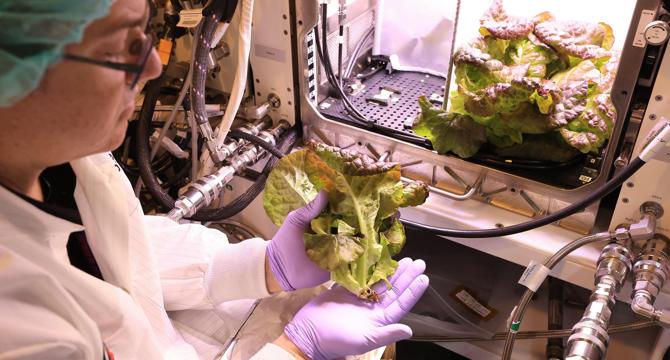
Image Credit: Nasa
NASA Harvests Lettuce for Space Station Study
- NASA recently harvested 'Outredgeous' romaine lettuce from the Advanced Plant Habitat ground unit at Kennedy Space Center.
- The study aims to explore the effects of moisture conditions on plant growth, nutrient content, and the plant microbiome in microgravity.
- This research contributes to NASA's efforts in cultivating safe and nutritious food for astronauts in space.
- The project builds on past experiments and could benefit future space missions to the Moon, Mars, and potentially lead to agricultural advancements on Earth.
Read Full Article
20 Likes
Nasa
237
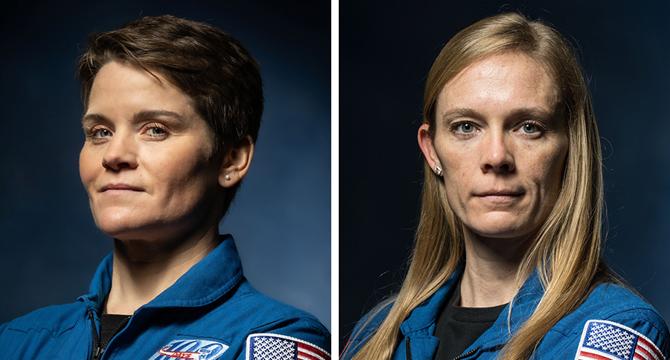
Image Credit: Nasa
NASA Astronauts McClain and Ayers Exit Station Soon for Spacewalk
- NASA astronauts Anne McClain and Nichole Ayers are preparing to conduct a spacewalk outside the International Space Station.
- The spacewalk is scheduled to begin at approximately 8:15 a.m. EDT and last about six and a half hours.
- During the spacewalk, the astronauts will install a mounting bracket for the future installation of additional solar arrays to increase power generation capability.
- This will be the third spacewalk for McClain and the first for Ayers, with McClain serving as spacewalk crew member 1 and Ayers as crew member 2.
Read Full Article
14 Likes
Earthsky
260
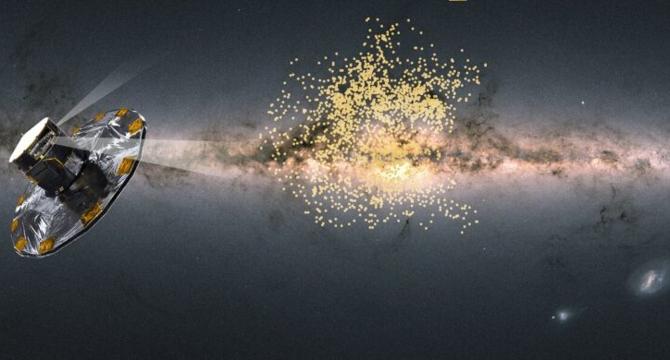
Image Credit: Earthsky
Family of stars set to leave home and zip across the galaxy
- The Gaia space telescope has discovered an unusual family of stars named Ophion, consisting of over 1,000 young stars, set to disperse across the galaxy in a haphazard manner.
- Ophion's behavior differs from typical star families, as they are moving swiftly and will soon completely scatter, leaving an empty nest behind.
- Researchers used Gaia's data to identify Ophion, utilizing a new model called Gaia Net to analyze the spectroscopic data of young stars.
- The uniqueness of Ophion raises questions about why these stars are behaving abnormally, with potential influences from neighboring energetic events or past supernova explosions.
- The discovery of Ophion challenges traditional methods of identifying star families and highlights the importance of advanced data analysis techniques like Gaia Net.
- Despite the conclusion of Gaia's observations, the mission's data will continue to provide insights and discoveries for years to come, with upcoming substantial data releases planned.
- Gaia's contribution to understanding stellar evolution and galactic dynamics marks a significant scientific achievement for astronomy and astrophysics.
- The collaborative efforts of researchers, including undergraduate and postgraduate students, have led to innovative insights into the behavior of stars within the Milky Way.
- The mystery surrounding Ophion's unique behavior opens up new avenues for investigating star groups and evolving our understanding of stellar dynamics in the universe.
- The Gaia mission's legacy, through its vast data and innovative methodologies, continues to reshape our knowledge of stars and galaxies, paving the way for further discoveries in the field of astronomy.
Read Full Article
15 Likes
Brighter Side of News
89
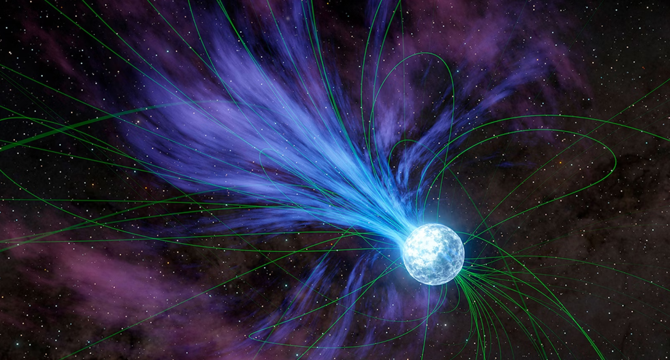
Image Credit: Brighter Side of News
Star flares blast out massive amounts of gold across the galaxy
- A massive eruption from a magnetar in 2004 revealed a new understanding of the universe's heaviest elements like gold and platinum.
- The afterglow following the gamma-ray burst from the magnetar indicated the creation of heavy elements through rapid neutron capture, reshaping theories on their origins.
- Heavy elements like gold and platinum are primarily formed in extreme environments through rapid neutron capture, a process that requires abundant free neutrons.
- Scientists previously believed that such heavy elements were only formed in supernovae or neutron star collisions, until the discovery of magnetar flares as additional contributors.
- Magnetars, highly magnetized stars born from massive star cores, can release enormous energy in giant flares, creating conditions for the formation of heavy elements like gold.
- Detailed nuclear reaction simulations confirmed that gold and other heavy nuclei can form in the ejected material from magnetar giant flares.
- The delayed gamma-ray signal observed after the 2004 magnetar flare matched the expected profile of radioactive decay from newly formed heavy elements like gold.
- Researchers estimated that up to 10 percent of the heavy elements in the galaxy could be attributed to magnetar flares, providing valuable insights into galactic enrichment.
- Magnetar flares could explain the abundance of heavy elements in ancient galaxies with low metallicity, offering a solution to a longstanding astronomical mystery.
- Ongoing research and upcoming missions aim to detect gamma-ray glows in real time, enhancing our understanding of the production of heavy elements in the universe.
Read Full Article
5 Likes
Discover more
Knowridge
331

Image Credit: Knowridge
Astronomers observe dark matter bridge in the Perseus Cluster
- Astronomers discovered a Dark Matter bridge connecting the Perseus Cluster to a subcluster of galaxies, resolving a long-standing mystery in astronomy.
- The international team of astronomers, led by Kim HyeongHan from South Korea, made this discovery using the Subaru Telescope at Maunakea, Hawaii.
- The research paper titled 'Direct Evidence of a Major Merger in the Perseus Cluster' was published in Nature Astronomy on April 16th, 2025.
- The Dark Matter bridge, 1.4 million light-years from the Perseus Cluster's core, is approximately 200 trillion times the mass of the Sun and provides evidence of past gravitational interactions.
Read Full Article
19 Likes
Nasa
242

Image Credit: Nasa
May’s Night Sky Notes: How Do We Find Exoplanets?
- Astronomers have been searching for planets around stars other than our Sun since the 19th century, with the first discovery of an exoplanet in the mid-1990s.
- The transit method, used by Kepler and other observatories, detects planets by observing the slight dip in brightness when a planet crosses in front of its host star.
- The transit method's drawback is that it requires a favorable angle to observe transits, making detections rare, even in our own solar system.
- The wobble method, also known as the radial velocity method, detects planets by observing the slight wobble of a star caused by an orbiting planet.
- By analyzing the Doppler shift in a star's spectra, astronomers can determine the mass of the orbiting planet and its orbital period.
- Exoplanets can also be detected through direct imaging using instruments like coronagraphs to block out the host star's light.
- NASA's James Webb Space Telescope has provided detailed images of exoplanets, revealing information about their atmospheres, temperatures, and potential biosignatures.
- NASA offers various resources and activities for exploring exoplanets, such as the Eyes on Exoplanets program and the latest exoplanet news.
- The future of exoplanet discovery holds promise for deepening humanity's understanding of the Universe and the potential for life beyond Earth.
- The article discusses the methods employed by astronomers to detect exoplanets, such as the transit method, wobble method, and direct imaging, showcasing the advancements in technology and observational techniques over the years.
Read Full Article
14 Likes
Semiengineering
62

Image Credit: Semiengineering
Extra Safety Measures Needed For Aerospace ICs
- Aerospace safety requirements and standards vary depending on whether a spacecraft is manned or unmanned, and how crucial the mission is.
- Defense contractors designing spacecraft use various functional safety approaches based on mission criticality.
- Reliability is crucial in aerospace, as losing a satellite can result in major setbacks for companies.
- Components in spacecraft must be fail-operational due to limited access for repairs.
- Imagination Technologies uses N-modular redundancy for safety in aerospace ICs, ensuring data delivery even in case of failures.
- Duplicating critical hardware and isolating failures within modules are efficient safety practices in aerospace design.
- Triple module redundancy is more common in aerospace than in the automotive sector due to critical circuit functions.
- Fault injections with digital twins help in simulating effects of temperature dissipation and radiation in aerospace ICs.
- Memory protection in aerospace applications involves error correction codes, redundancy, and targeted memory reactivation for fault detection and correction.
- Various standards like DO-254, QML, and ASIL are used in the aerospace industry to ensure safety and reliability of components.
Read Full Article
3 Likes
Earthsky
89
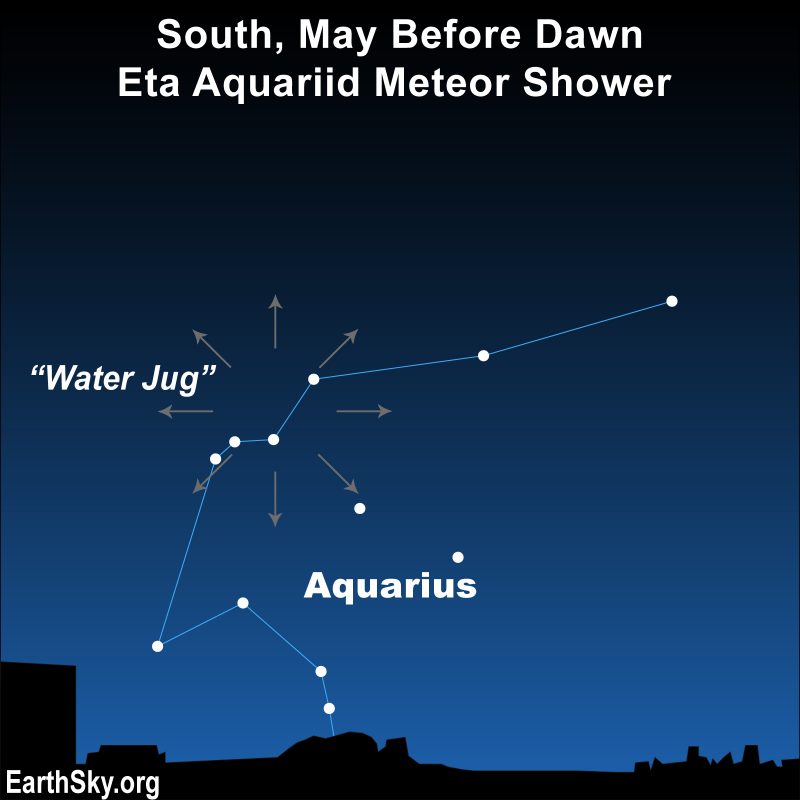
Image Credit: Earthsky
Meteor shower guide 2025: Next up is the Eta Aquariids
- The Eta Aquariid meteor shower will peak in early May and is best viewed from the Southern Hemisphere, but Northern Hemisphere viewers might also see some meteors.
- The best mornings to watch the Eta Aquariids are on May 5 and 6, 2025, in the hours before dawn, with varying peak times predicted by experts.
- The peak of the Eta Aquariid shower stretches out over several days, leading to elevated meteor numbers a few days before and after the predicted peak time.
- The first quarter moon on May 4 will provide moonless skies in the post-midnight hours for viewing the 2025 Eta Aquariids.
- The Eta Aquariids' radiant point will be near the star Eta Aquarii in the constellation Aquarius, rising in the wee hours and climbing toward its highest point at dawn.
- The Eta Aquariid meteor shower favors latitudes in the southern U.S. or the Southern Hemisphere, where the radiant appears higher in the morning sky.
- The Delta Aquariid meteor shower in late July to mid-August will have a peak predicted for July 30, 2025, and is best viewed from latitudes in the Southern Hemisphere.
- The Delta Aquariids tend to be fainter than Perseid meteors, with a maximum hourly rate of 15 to 20 meteors under ideal moonless conditions.
- The Delta Aquariids' radiant point will be near the star Skat in the constellation Aquarius, with about 5% to 10% of meteors leaving glowing ionized gas trails.
- The Perseid meteor shower in mid-July to mid-August will peak on August 12, 2025, offering potentially 90 meteors per hour under a dark sky with no moon.
- The radiant point for the Perseids is in the constellation Perseus the Hero, with the shower being most intense just before dawn and visible from the Northern Hemisphere.
Read Full Article
5 Likes
Guardian
319
Image Credit: Guardian
Dying satellites can drive climate change and ozone depletion, study finds
- A recent study suggests that emissions from expired satellites falling to Earth and burning up will have significant implications for ozone hole recovery and climate change.
- With the number of satellites expected to increase to over 60,000 by 2040, the release of pollutants like aerosolised aluminium during satellite disposal could impact the Earth's atmosphere.
- Researchers simulated the effects of an annual release of 10,000 tonnes of aluminium oxide by 2040 to understand the potential impact on the environment.
- Results show that the accumulation of re-entry materials could lead to temperature anomalies, reduction in wind speeds, and ozone depletion, affecting ozone hole recovery efforts.
Read Full Article
19 Likes
Knowridge
350
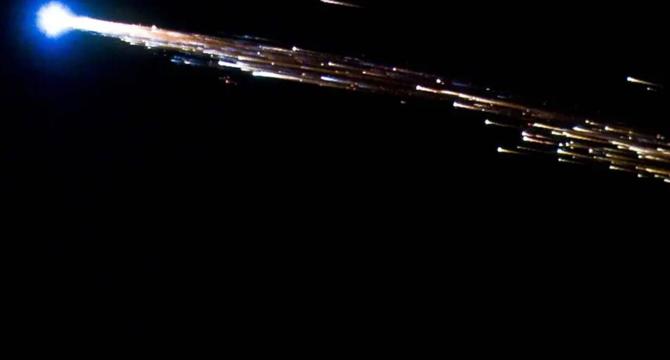
Image Credit: Knowridge
Soviet-era Venus mission to reenter in May
- After over 50 years in space, the late Soviet Union’s Kosmos-482 mission is set to reenter the Earth’s atmosphere in early May.
- The mission, likely intended for Venus, was stranded in Earth orbit due to a timer anomaly after launch in 1972.
- The uncontrolled reentry of the 500-kilogram payload poses minimal risk on the ground, with an uncertain fate for the lander designed for Venus atmosphere entry.
- The reentry is projected for a wide swath of latitudes, with more accurate predictions expected as the date approaches, amidst the growing issue of space debris and increasing satellite launches.
Read Full Article
21 Likes
Nasa
121

Image Credit: Nasa
Sols 4525-4526: The Day After Groundhog Day (Between Ghost Mountain and Texoli, Headed South)
- NASA's Curiosity rover, on sols 4525 and 4526, conducted targeted science activities, including DRT/APXS/MAHLI measurements on rock targets 'Bradshaw Trail' and 'Sweetwater River'.
- The rover captured images of geochemically interesting targets like 'Breeze Hill' and 'Laguna Mountain' and conducted long-distance imaging to explore sedimentary features.
- Curiosity also documented sand and dust movement, analyzed modern environmental conditions like water-ice clouds, and updated its AEGIS targeting capability.
- The rover's activities indicate successful navigation and scientific progress in its exploration between Ghost Mountain and Texoli on Mars.
Read Full Article
7 Likes
Knowridge
179
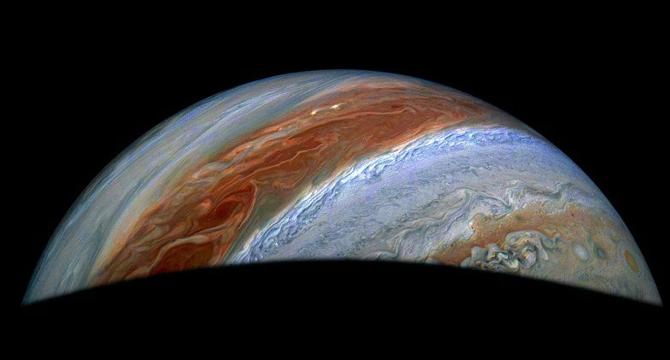
Image Credit: Knowridge
NASA’s Juno mission peeks beneath Jupiter’s clouds and Io’s volcanoes
- NASA's Juno spacecraft has unveiled exciting discoveries from Jupiter and its moon, Io, revealing insights into the planets' atmospheres and surfaces.
- Juno's data shows Jupiter's powerful jet stream near the north pole and massive cyclones that move like bouncing springs, interacting with each other.
- The spacecraft found Jupiter's north polar region to be colder than surrounding areas, surrounded by high-speed winds over 100 miles per hour.
- Juno also studied Io and found evidence of still-warm lava beneath its surface, with about 10% of Io’s surface having cooling lava just under the crust.
Read Full Article
10 Likes
Digitaltrends
412

Image Credit: Digitaltrends
The ISS just dodged part of a 20-year-old Chinese rocket
- The International Space Station (ISS) raised its orbit to avoid a piece of space junk from a 20-year-old Chinese rocket.
- The maneuver was carried out by firing thrusters on the docked Progress 91 spacecraft for 3 minutes and 33 seconds.
- The debris would have come within 0.4 miles of the station if the orbit was not raised, but the station's operations were not impacted.
- NASA continues to track hazardous objects to protect the ISS and astronauts, with avoidance systems helping prevent major collisions.
Read Full Article
24 Likes
Medium
85

Image Credit: Medium
The Hill & Valley Forum 2025
- The Hill and Valley Forum 2025 successfully brought together government, venture capital, and tech leaders to discuss American power in AI, automation, and global competition.
- Key takeaways include the importance of domestic power for AI, the rise of agentic robots, the need to revive U.S. manufacturing, and the dominance of American orbital rocket launches.
- The event emphasized the need to adjust regulations, focus on re-skilling, invest in new industries, and attract top talent to the U.S.
- Overall, the forum highlighted the transformative impact of AI, the importance of inclusive growth, and the call to lead and believe in American innovation.
Read Full Article
5 Likes
Nasa
161

Image Credit: Nasa
NASA STEM Programs Ignite Curiosity Beyond the Classroom
- NASA Engages, the agency's outreach platform, facilitates collaboration to inspire the next generation of innovators beyond the classroom.
- Through initiatives like Aero Fair, NASA professionals visit schools to engage students in aeronautics, sparking interest in STEM careers.
- Volunteers like Giovanna Camacho and Gary Laier contribute their expertise to inspire students and strengthen NASA's community connections.
- Aero Fair allows students to explore real-world STEM applications and see themselves as problem-solvers and innovators.
- Educators can request Aero Fair experiences through NASA's STEM Gateway, offering hands-on learning opportunities for students.
- NASA Engages website matches outreach opportunities to employee skills, while educators can request support for events.
- Participating in outreach activities not only benefits students and communities but also inspires NASA volunteers like Camacho and Laier.
- External groups can connect with NASA through NASA Engages for events, speakers, and educational support, fostering STEM engagement.
- The NASA STEM Gateway provides individuals with opportunities to participate in NASA-developed STEM events and programs like Aero Fair.
- By engaging in outreach efforts, NASA employees help ignite curiosity, provide education, and strengthen community ties for future innovations.
Read Full Article
9 Likes
For uninterrupted reading, download the app